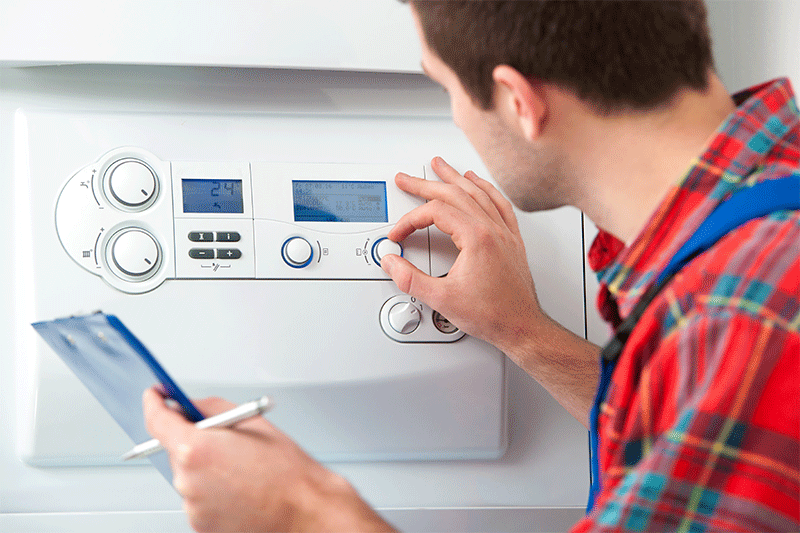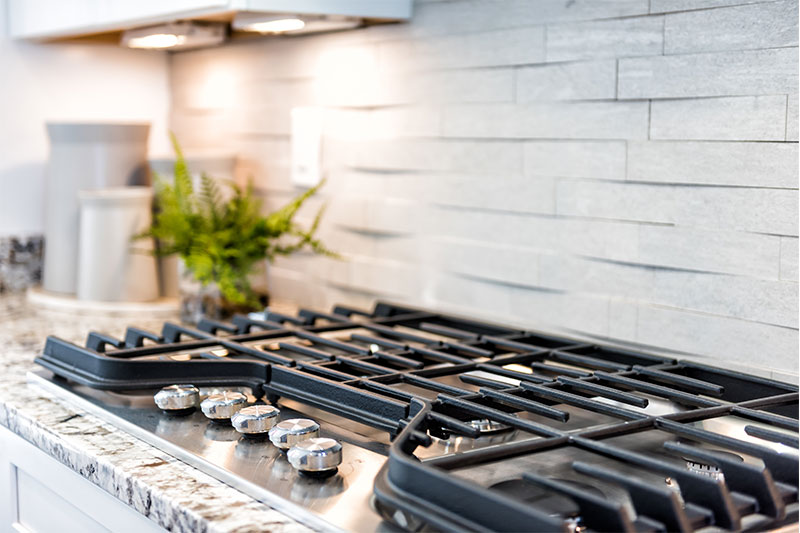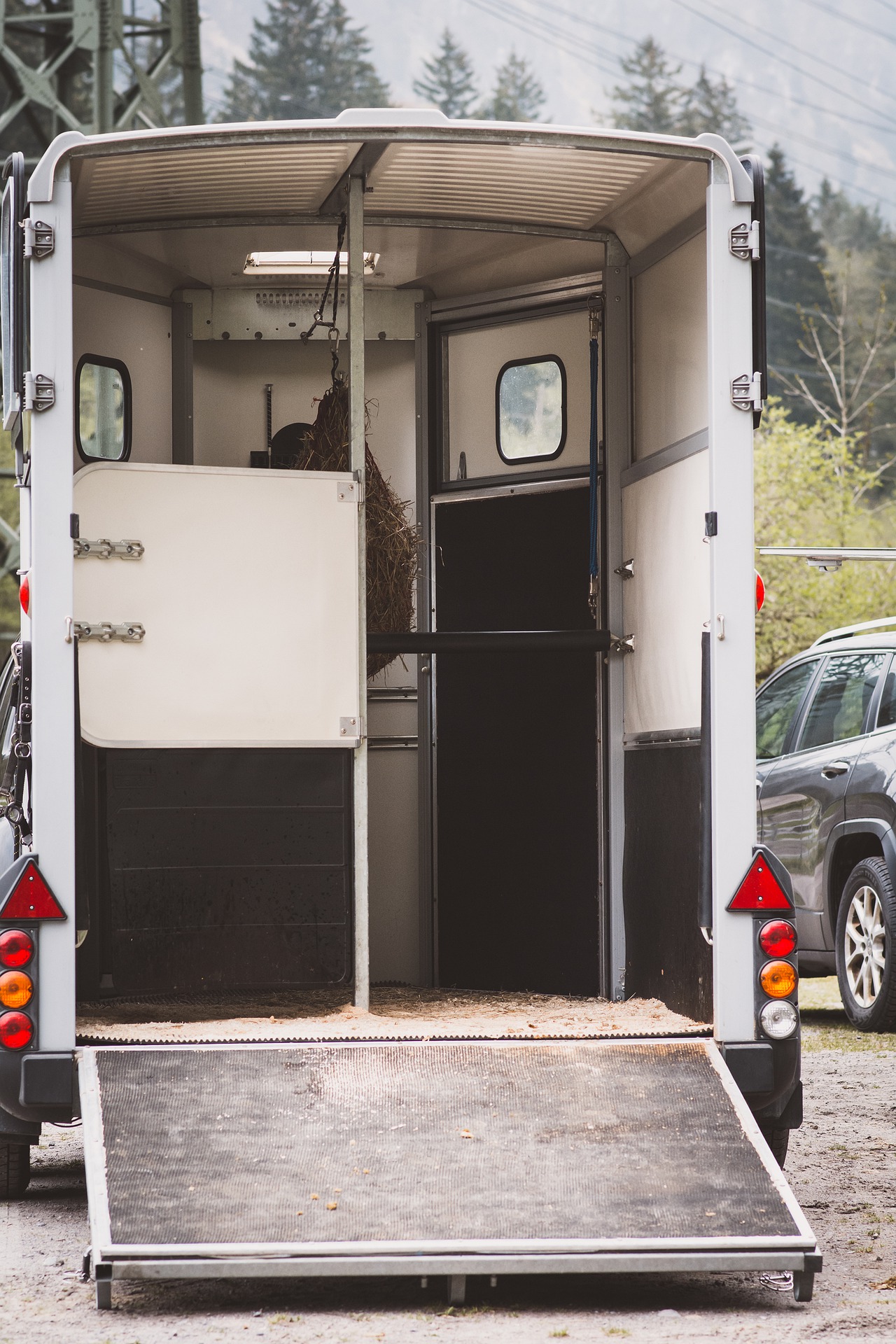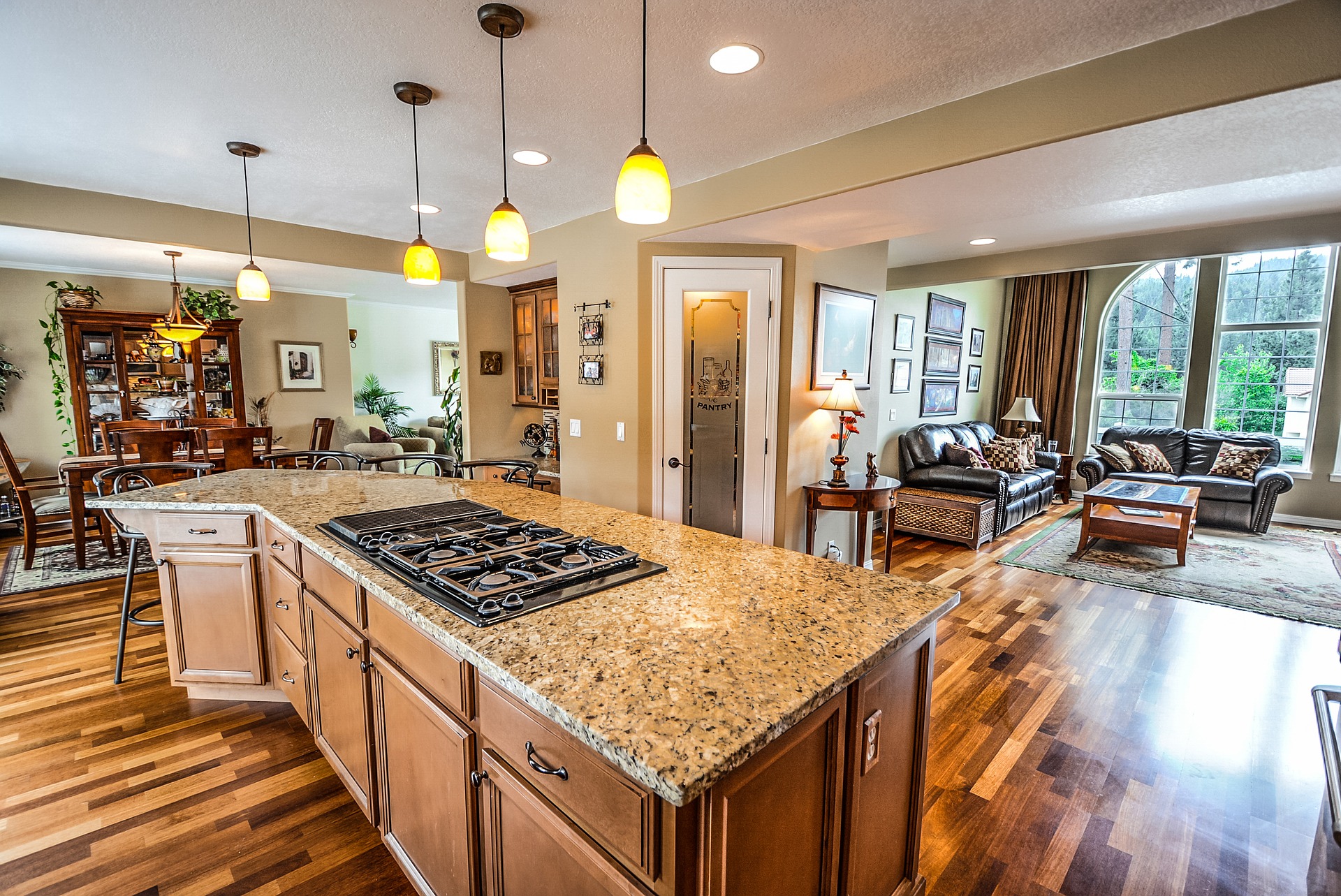
The UK has committed to reducing greenhouse gas emissions by 80% by 2050 in order to stop a climate crisis and a significant amount of weight will need to be pulled by households. The average British household contributes 8.1 tonnes of CO2 or CO2 equivalent into the atmosphere each year—down from 12.8 tonnes in 1990 but still higher than it should be. This account for 40% of the country’s total carbon emissions.
You can reduce your individual carbon footprint through lifestyle changes, such as driving less, eating less or no meat, avoiding flying, and simply buying fewer things. However, space for improvement can be found within the walls of your home—sometimes literally, with cavity wall insulation. The heating of our domestic spaces accounts for 29% of each household’s carbon emissions while the generation of the electricity we use—to light our rooms, power our appliances, and charge the device you’re reading this on right now—accounts for another 21%. Improve the energy efficiency of your home and your carbon footprint will shrink.
The Committee on Climate Change found that increasing efficiency through better insulation, more efficient appliances, LED lighting, and a smart heating system can reduce the yearly carbon emissions of the average British household by 0.6 tonnes, while also notching you an annual savings of £184.
You’ll have to make out outlay of cash to transform your property into a low-carbon, efficient hub, but don’t consider it money lost: you’ll see savings on your energy bill, and improvements that increase the energy efficiency of your property will increase its resale value, particularly as future buyers become more sensitive to the rising cost of energy and to their impact on the climate.
Service or replace your old boiler
Old gas boilers can be incredibly wasteful so even if you think yours is functioning well, have it serviced and assessed by an engineer and consider a replacement. A new boiler is a significant investment, with the cost of a new boiler starting at more than £2,000, but a more efficient one could trim your gas usage by a third, lowering your energy bills and narrowing your carbon footprint as a result.
Turn down your thermostat—and smarten up your heating
The UK is battling fiercer and longer winters as a result of climate change, but rather than use the next blizzard or month of freezing temperatures to crank up your thermostat, carefully consider the climate and how and when you’re heating your home. Turning down your thermostat by just 1 degree Celsius during the winter can shave 10% from your energy use—savings your bank account and the planet will thank you for. According to NHS advice, anyone who’s in good health, under 65, and active can safely turn their thermostat down below 18C, as long as they’re comfortable.
Be more strategic in using your central heating, thinking of your carbon emissions—and your energy bill—every time you fiddle with the thermostat or turn a radiator valve. Use valves to turn off the heat in rooms you don’t need to be warmed right then, such as your bedroom during the day, or your kitchen when the oven and washer are running. Additionally, turning down your heat 5-8 degrees Celsius for 8 hours overnight, and snuggling over a higher tog duvet and flannel sheets, can knock another 10% from your annual energy consumption.
If your boiler is compatible, get a smart thermostat, which can give you more control over how much heat you’re using and when. With a smart thermostat, you can set timers and turn on and off your heating remotely (for example, turn heating down during the day and then dial it up just before you leave work so you’ll come in from your chilly commute to a cosy home) and track your usage over time.
Insulate your home
We lose a third of the heat of our homes straight through our walls and lofts. Add extra loft and cavity wall insulation to keep that precious heated air in—and block draughts to keep winter out—and your boiler won’t have to work as hard, reducing its gas consumption and carbon footprint.
Buy more efficient appliances
Outside of heating, your kitchen, packed with electricity-hungry appliances, is the main source of carbon emissions in your home. Running an electric tumble drier 148 times a year will add 159kg of CO2 to the atmosphere each year—and cost you £37.
Opt for A+++ rated appliances when replacing old ones: the energy consumption of the best-rated appliances on the market can be a fraction of that old ones. You’ll see the return in falling running costs. And buy a clothes rack and ditch that tumble drier.
Opt for gas cookers over electric cookers: a gas oven produces just 38kg of CO2 each year and costs just £7.60, compared to the 91kg of CO2 an electric oven produces, and the £21.08 it costs to run.
Opt for a renewable energy tariff
A number of green suppliers offer electricity generated from 100% renewable resources, including, wind and solar. Increasing the presence of green gas, or biomethane in their gas mixes. Prices have fallen so it’s likely you won’t pay anymore for being environmentally conscious at your meter then you would otherwise. Compare gas and electricity tariffs from green suppliers and the Big Six and see what savings you can make, both in your bills and household carbon budget.
Ref :
The UK has committed to reducing greenhouse gas emissions by 80% by 2050 in order to stop a climate crisis and a significant amount of weight will need to be pulled by households. The average British household contributes 8.1 tonnes of CO2 or CO2 equivalent into the atmosphere each year—down from 12.8 tonnes in 1990 but still higher than it should be. This account for 40% of the country’s total carbon emissions.
You can reduce your individual carbon footprint through lifestyle changes, such as driving less, eating less or no meat, avoiding flying, and simply buying fewer things. However, space for improvement can be found within the walls of your home—sometimes literally, with cavity wall insulation. The heating of our domestic spaces accounts for 29% of each household’s carbon emissions while the generation of the electricity we use—to light our rooms, power our appliances, and charge the device you’re reading this on right now—accounts for another 21%. Improve the energy efficiency of your home and your carbon footprint will shrink.
The Committee on Climate Change found that increasing efficiency through better insulation, more efficient appliances, LED lighting, and a smart heating system can reduce the yearly carbon emissions of the average British household by 0.6 tonnes, while also notching you an annual savings of £184.
You’ll have to make out outlay of cash to transform your property into a low-carbon, efficient hub, but don’t consider it money lost: you’ll see savings on your energy bill, and improvements that increase the energy efficiency of your property will increase its resale value, particularly as future buyers become more sensitive to the rising cost of energy and to their impact on the climate.
Service or replace your old boiler
Old gas boilers can be incredibly wasteful so even if you think yours is functioning well, have it serviced and assessed by an engineer and consider a replacement. A new boiler is a significant investment, with the cost of a new boiler starting at more than £2,000, but a more efficient one could trim your gas usage by a third, lowering your energy bills and narrowing your carbon footprint as a result.
Turn down your thermostat—and smarten up your heating
The UK is battling fiercer and longer winters as a result of climate change, but rather than use the next blizzard or month of freezing temperatures to crank up your thermostat, carefully consider the climate and how and when you’re heating your home. Turning down your thermostat by just 1 degree Celsius during the winter can shave 10% from your energy use—savings your bank account and the planet will thank you for. According to NHS advice, anyone who’s in good health, under 65, and active can safely turn their thermostat down below 18C, as long as they’re comfortable.
Be more strategic in using your central heating, thinking of your carbon emissions—and your energy bill—every time you fiddle with the thermostat or turn a radiator valve. Use valves to turn off the heat in rooms you don’t need to be warmed right then, such as your bedroom during the day, or your kitchen when the oven and washer are running. Additionally, turning down your heat 5-8 degrees Celsius for 8 hours overnight, and snuggling over a higher tog duvet and flannel sheets, can knock another 10% from your annual energy consumption.
If your boiler is compatible, get a smart thermostat, which can give you more control over how much heat you’re using and when. With a smart thermostat, you can set timers and turn on and off your heating remotely (for example, turn heating down during the day and then dial it up just before you leave work so you’ll come in from your chilly commute to a cosy home) and track your usage over time.
Insulate your home
We lose a third of the heat of our homes straight through our walls and lofts. Add extra loft and cavity wall insulation to keep that precious heated air in—and block draughts to keep winter out—and your boiler won’t have to work as hard, reducing its gas consumption and carbon footprint.
Buy more efficient appliances
Outside of heating, your kitchen, packed with electricity-hungry appliances, is the main source of carbon emissions in your home. Running an electric tumble drier 148 times a year will add 159kg of CO2 to the atmosphere each year—and cost you £37.
Opt for A+++ rated appliances when replacing old ones: the energy consumption of the best-rated appliances on the market can be a fraction of that old ones. You’ll see the return in falling running costs. And buy a clothes rack and ditch that tumble drier.
Opt for gas cookers over electric cookers: a gas oven produces just 38kg of CO2 each year and costs just £7.60, compared to the 91kg of CO2 an electric oven produces, and the £21.08 it costs to run.
Opt for a renewable energy tariff
A number of green suppliers offer electricity generated from 100% renewable resources, including, wind and solar. Increasing the presence of green gas, or biomethane in their gas mixes. Prices have fallen so it’s likely you won’t pay anymore for being environmentally conscious at your meter then you would otherwise. Compare gas and electricity tariffs from green suppliers and the Big Six and see what savings you can make, both in your bills and household carbon budget.
Ref :
The UK has committed to reducing greenhouse gas emissions by 80% by 2050 in order to stop a climate crisis and a significant amount of weight will need to be pulled by households. The average British household contributes 8.1 tonnes of CO2 or CO2 equivalent into the atmosphere each year—down from 12.8 tonnes in 1990 but still higher than it should be. This account for 40% of the country’s total carbon emissions.
You can reduce your individual carbon footprint through lifestyle changes, such as driving less, eating less or no meat, avoiding flying, and simply buying fewer things. However, space for improvement can be found within the walls of your home—sometimes literally, with cavity wall insulation. The heating of our domestic spaces accounts for 29% of each household’s carbon emissions while the generation of the electricity we use—to light our rooms, power our appliances, and charge the device you’re reading this on right now—accounts for another 21%. Improve the energy efficiency of your home and your carbon footprint will shrink.
The Committee on Climate Change found that increasing efficiency through better insulation, more efficient appliances, LED lighting, and a smart heating system can reduce the yearly carbon emissions of the average British household by 0.6 tonnes, while also notching you an annual savings of £184.
You’ll have to make out outlay of cash to transform your property into a low-carbon, efficient hub, but don’t consider it money lost: you’ll see savings on your energy bill, and improvements that increase the energy efficiency of your property will increase its resale value, particularly as future buyers become more sensitive to the rising cost of energy and to their impact on the climate.
Service or replace your old boiler
Old gas boilers can be incredibly wasteful so even if you think yours is functioning well, have it serviced and assessed by an engineer and consider a replacement. A new boiler is a significant investment, with the cost of a new boiler starting at more than £2,000, but a more efficient one could trim your gas usage by a third, lowering your energy bills and narrowing your carbon footprint as a result.
Turn down your thermostat—and smarten up your heating
The UK is battling fiercer and longer winters as a result of climate change, but rather than use the next blizzard or month of freezing temperatures to crank up your thermostat, carefully consider the climate and how and when you’re heating your home. Turning down your thermostat by just 1 degree Celsius during the winter can shave 10% from your energy use—savings your bank account and the planet will thank you for. According to NHS advice, anyone who’s in good health, under 65, and active can safely turn their thermostat down below 18C, as long as they’re comfortable.
Be more strategic in using your central heating, thinking of your carbon emissions—and your energy bill—every time you fiddle with the thermostat or turn a radiator valve. Use valves to turn off the heat in rooms you don’t need to be warmed right then, such as your bedroom during the day, or your kitchen when the oven and washer are running. Additionally, turning down your heat 5-8 degrees Celsius for 8 hours overnight, and snuggling over a higher tog duvet and flannel sheets, can knock another 10% from your annual energy consumption.
If your boiler is compatible, get a smart thermostat, which can give you more control over how much heat you’re using and when. With a smart thermostat, you can set timers and turn on and off your heating remotely (for example, turn heating down during the day and then dial it up just before you leave work so you’ll come in from your chilly commute to a cosy home) and track your usage over time.
Insulate your home
We lose a third of the heat of our homes straight through our walls and lofts. Add extra loft and cavity wall insulation to keep that precious heated air in—and block draughts to keep winter out—and your boiler won’t have to work as hard, reducing its gas consumption and carbon footprint.
Buy more efficient appliances
Outside of heating, your kitchen, packed with electricity-hungry appliances, is the main source of carbon emissions in your home. Running an electric tumble drier 148 times a year will add 159kg of CO2 to the atmosphere each year—and cost you £37.
Opt for A+++ rated appliances when replacing old ones: the energy consumption of the best-rated appliances on the market can be a fraction of that old ones. You’ll see the return in falling running costs. And buy a clothes rack and ditch that tumble drier.
Opt for gas cookers over electric cookers: a gas oven produces just 38kg of CO2 each year and costs just £7.60, compared to the 91kg of CO2 an electric oven produces, and the £21.08 it costs to run.
Opt for a renewable energy tariff
A number of green suppliers offer electricity generated from 100% renewable resources, including, wind and solar. Increasing the presence of green gas, or biomethane in their gas mixes. Prices have fallen so it’s likely you won’t pay anymore for being environmentally conscious at your meter then you would otherwise. Compare gas and electricity tariffs from green suppliers and the Big Six and see what savings you can make, both in your bills and household carbon budget.






 POSTED BY
POSTED BY 

